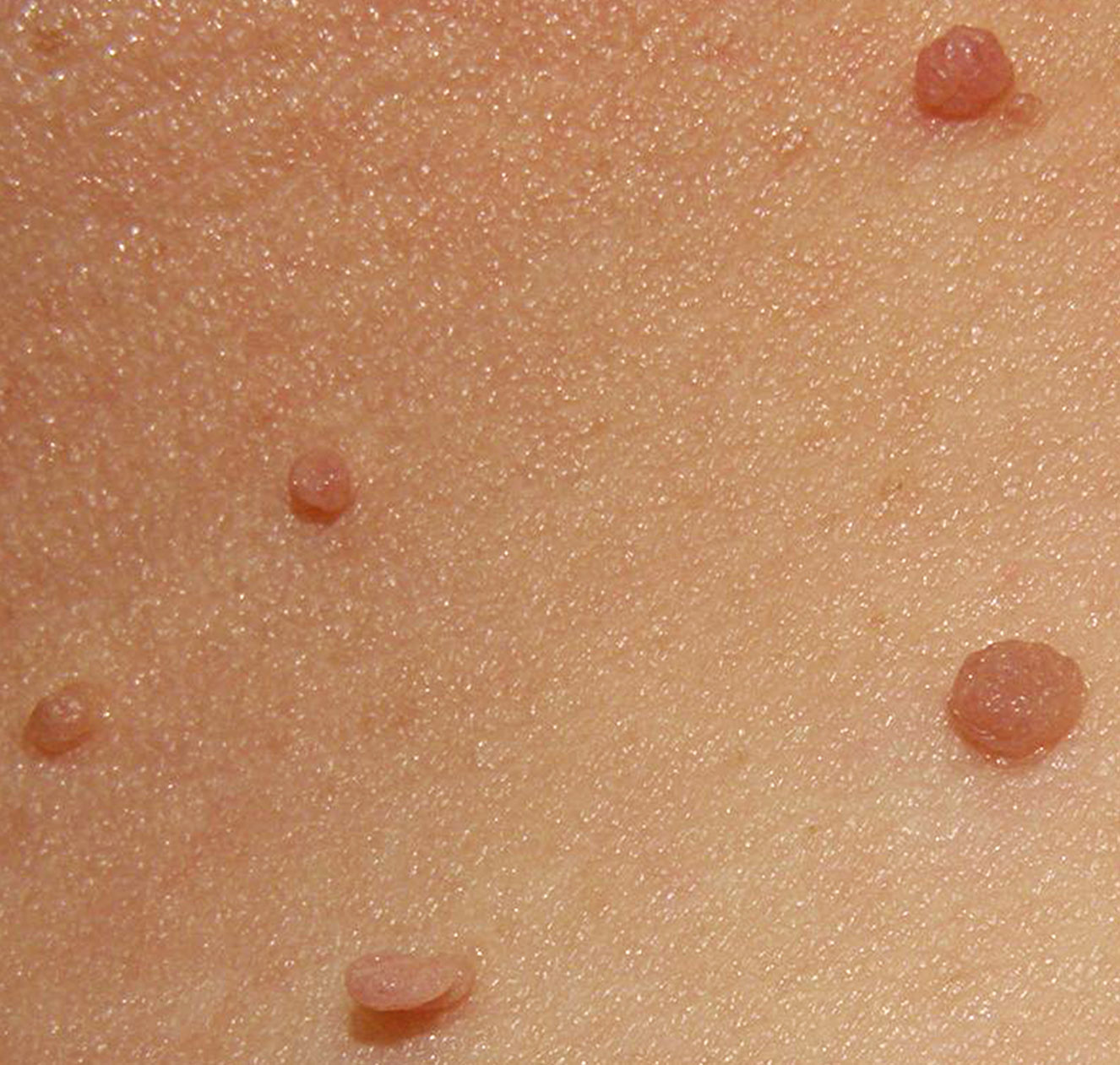What are the symptoms of skin tags?
Skin tags, or acrochordons, typically present with the following symptoms:
- Small, Soft Growths: Skin tags are usually small, soft, and flesh-colored or slightly darker. They often have a somewhat rounded or irregular shape.
- Pedunculated: They are commonly attached to the skin by a small, thin stalk or “peduncle.”
- Size Variability: They can range in size from a few millimeters to a few centimeters.
- Painless: Skin tags are generally painless but may cause discomfort if they are irritated or snagged.
- Common Locations: They are often found in areas where the skin folds or rubs together, such as the neck, armpits, groin, under the breasts, or on the eyelids.
While skin tags are usually harmless and benign, if you notice any changes in their appearance or if they cause discomfort, it’s a good idea to consult a healthcare professional.
What are the causes of skin tags?
Skin tags, or acrochordons, are benign growths that can occur due to a variety of factors:
- Friction: Repeated friction or rubbing of the skin, especially in areas where skin folds or creases, can contribute to the development of skin tags. Common areas include the neck, armpits, groin, and under the breasts.
- Genetics: A genetic predisposition may play a role. Skin tags often run in families, suggesting a hereditary component.
- Hormonal Changes: Hormonal changes, such as those occurring during pregnancy or with certain medical conditions, can contribute to the development of skin tags.
- Obesity: Excess weight and obesity can increase the likelihood of skin tags due to increased skin folds and friction.
- Insulin Resistance: Conditions associated with insulin resistance, such as type 2 diabetes and metabolic syndrome, are linked to a higher incidence of skin tags.
- Age: Skin tags are more common as people age, often appearing in middle-aged or older adults.
- Human Papillomavirus (HPV): Some research suggests that certain types of HPV may be associated with the development of skin tags, though the exact relationship is not fully understood.
Skin tags are generally harmless, but if they become painful, irritated, or change in appearance, it’s advisable to seek medical advice.
What is the treatment for skin tags?
Treatment for skin tags is usually considered for cosmetic reasons or if the tags become irritated or problematic. Several methods are available:
- Cryotherapy: This involves freezing the skin tag with liquid nitrogen, causing it to fall off over time.
- Electrosurgery: An electric current is used to burn off the skin tag. This method cauterizes the area and helps prevent bleeding.
- Ligation: A small band is placed around the base of the skin tag to cut off its blood supply. The tag will eventually fall off as the tissue dies.
- Excision: The skin tag is cut off with sterile scissors or a scalpel. This is often done in a medical setting to minimize risk of infection and ensure proper healing.
- Over-the-Counter Treatments: Some products are available for home use that claim to remove skin tags. These usually involve topical solutions that may not be as effective or may cause skin irritation.
In general, it’s advisable to have skin tags removed by a healthcare professional to ensure proper care and avoid complications such as infection or excessive bleeding.

Leave a Reply
You must be logged in to post a comment.